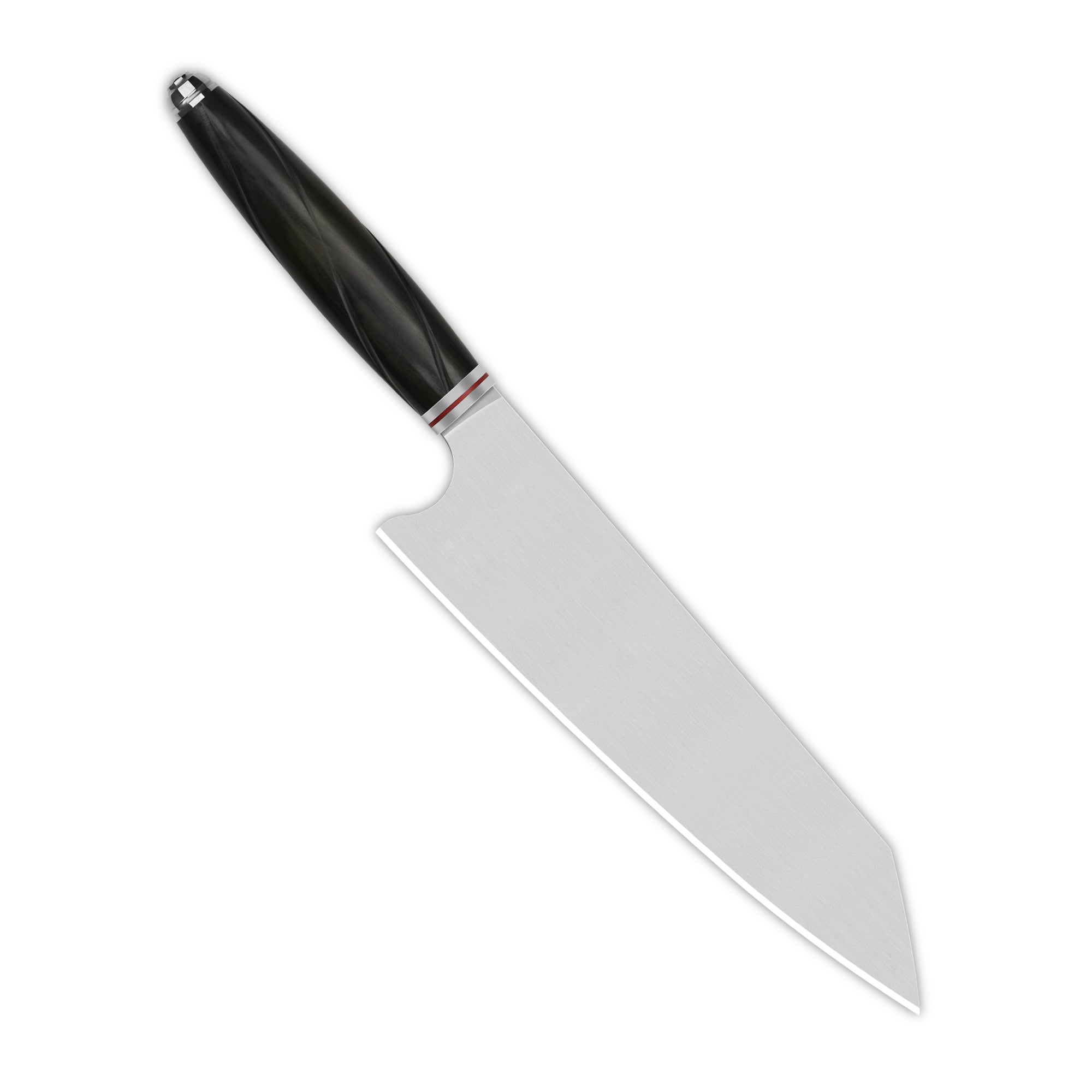When it comes to equipping your kitchen with the essential tools, a chef's knife is undoubtedly at the top of the list. A high-quality chef's knife can make all the difference in your cooking experience, allowing you to effortlessly chop, slice, and dice with precision. In this comprehensive guide, we will explore the key factors to consider when choosing the right chef's knife for your needs.

Understanding the Anatomy of a Chef's Knife
Before delving into the selection process, it's important to familiarize yourself with the various parts of a chef's knife. The blade, handle, and tang are the three main components that determine the knife's performance and durability.
The blade is the most critical element of a chef's knife. It should be made of high-quality stainless steel, which ensures sharpness, corrosion resistance, and ease of maintenance. The length of the blade typically ranges from 6 to 12 inches, with the most common size being 8 inches. The shape of the blade can vary, with the two most popular options being the German-style and Japanese-style blades.
The handle of the knife should provide a comfortable grip and be made of a durable material such as wood, plastic, or composite. It should also have a full tang, meaning the metal of the blade extends all the way through the handle. A full tang provides better balance and stability, making the knife easier to control.
Choosing the Right Size
When it comes to the size of a chef's knife, it's essential to find the right balance between versatility and comfort. A knife that is too small may limit your ability to handle larger ingredients, while a knife that is too large may feel unwieldy and difficult to control.
For most home cooks, an 8-inch chef's knife is the ideal choice. It offers a good balance between maneuverability and cutting surface, allowing you to tackle a wide range of tasks. However, if you frequently work with larger ingredients or have larger hands, a 10-inch knife may be a better fit. On the other hand, if you have smaller hands or prefer more precision in your cutting, a 6-inch knife could be the right option.
Considering the Knife's Purpose
Another crucial factor to consider when choosing a chef's knife is its intended purpose. Different knives excel at different tasks, so it's important to select one that aligns with your cooking style and the ingredients you commonly work with.
If you primarily cook meat, a chef's knife with a sturdy blade and a pointed tip is essential for tasks such as deboning and trimming. On the other hand, if you frequently prepare vegetables, a knife with a thinner blade and a curved edge is better suited for precise slicing and dicing.
Maintaining Your Chef's Knife
Once you have chosen the perfect chef's knife, it's crucial to take proper care of it to ensure its longevity and performance. Regular maintenance includes honing the blade with a honing steel to keep it sharp and washing it by hand with mild soap and warm water to prevent damage from the dishwasher.
Additionally, storing your chef's knife properly is essential to avoid accidents and maintain its sharpness. Consider investing in a knife block, magnetic strip, or blade guard to protect the blade and prevent it from dulling or chipping.
By following these guidelines and considering your specific needs and preferences, you can confidently choose the right chef's knife that will become an indispensable tool in your kitchen.








